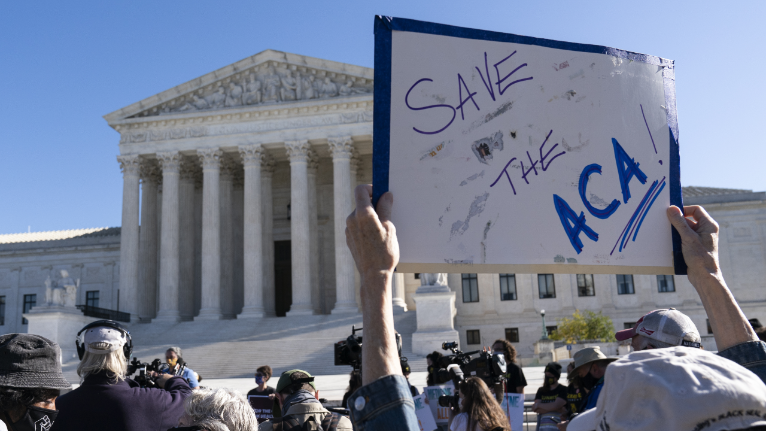As the Supreme Court heard the latest challenge to the Affordable Care Act Tuesday morning, the justices seemed unlikely to strike down the law based on the argument brought forth by the Trump administration and its fellow plaintiffs.
The court could still find the individual mandate – the now-zero dollar penalty for not having minimum insurance coverage – unconstitutional and separately strike it down.
The potential separation – or “severability” – of the mandate was a key question before the court Tuesday.
Both Chief Justice John Roberts and Justice Brett Kavanaugh expressed support for severing the mandate and letting the larger ACA stand, citing past court decisions.
“It is a very straightforward case,” Kavanaugh said, calling precedents “on point” – “Meaning that we would excise the mandate and leave the rest of the act in place.”
In 2017, Congress voted to reduce the penalty under the individual mandate to $0, rendering it unenforceable. Then, in 2018, a federal judge in Texas ruled the mandate to be unconstitutional and invalidated the entire ACA, which eventually led the case to the Supreme Court.
Chief Justice Roberts also pointed to the intention of Congress as a reason to keep the ACA in place.
“We ask ourselves whether Congress would want the rest of the law to survive if an unconstitutional provision were severed,” Roberts said. “Here, Congress left the rest of the law intact when it lowered the penalties to zero. That seems to be compelling evidence on the question.”
The court would need at least two of the court’s conservative justices to vote to uphold the ACA, whether the mandate is struck down or not.
“I think not a lot of it was surprising,” Katie Keith, adjunct professor of law at Georgetown University told Spectrum News. “Both of them seem to be really skeptical and explicitly skeptical.”
The justices also spent significant time on “standing,” or whether or not the plaintiffs’ case is valid. The plaintiffs include two individuals from Texas, and justices spent time trying to determine whether they were indeed harmed by the ACA’s requirements and a penalty set at $0.
“Standing should be something you really have to show and you really have to meet,” Keith said. “And I think you could see that play out, where some of them were really grappling with, you know, is the state's evidence base enough?”
Justice Clarence Thomas compared the potential effect of the individual mandate to state and local government mandates to wear masks.
“What if someone violates that command in similar terms to the mandate here, but no penalty, would they have standing to challenge the mandate to wear a mask?” Thomas asked.
“It comes down to whether there’s any real threat of enforcement,” one of the defendants’ attorneys, Michael Mongan, said.
The newly-confirmed Justice Amy Coney Barrett also spent time asking about standing. She pointed out that the plaintiffs may have been more likely harmed by Congress in its making of the law than harmed by the states being sued in the case.
“You cannot sue Congress,” Barrett said.
It’s not yet clear whether the court will find the individual mandate unconstitutional or not. But it appears that the majority of justices see the mandate as separable from the larger law itself, meaning it’s unlikely any part of the ACA will fall.
The justices are expected to make a ruling in the case by the end of the court’s term in June 2021.



